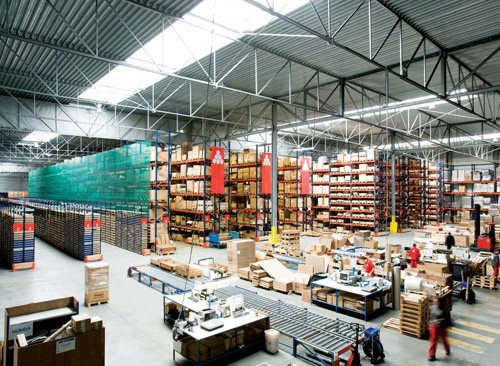We are now well into the January sales and the warehouses of online retailers are operating at full tilt to fulfil e-commerce orders. We can be certain that once the rush is over and the dust has settled, some companies will realise that they have struggled to maintain service levels. So, now the January sales are nearly over, what parts of their logistics operations should online and high street retailers look to improve to make the coming year a bit easier or, at least no more difficult than the last?
Reviewing the warehouse layout, processes, systems and organisation is worthwhile, most businesses should consider doing this at least every 3 – 5 years, depending on the company’s growth and trading conditions. Online retailers may want to make this review more regularly as growth rates of 20 – 40% are common, the warehouse operation in 2016 may simply not stand up to order volumes in 2017.
Storage and Throughput
Consider what your storage and throughput needs will be for the year ahead? Will your growth be from a similar SKU range, will your range grow, will the number of orders grow? Do your new SKUs look like your old SKUs, are larger, heavier or more difficult to handle / package lines entering your range for the coming year? What obsolete or excess stock remains after the festive period? Is there a clear strategy to sell this stock off or dispose of it before the orders mount once again?
Have you considered whether your warehouse has sufficient space? Ideally this question should be approached in a structured manner and supported by data analysis. This question is something many growing businesses do not address early enough. Many young businesses neglect the need to have accurate dimensional data for their products. This data can be very beneficial for optimising 3D space utilisation and revealing any hidden growth capacity, the data also gives more options around efficient process design.
Warehouse Management System
Do you have a Warehouse Management System (WMS) that offers the functionality you require to implement effective and efficient processes? The current trend is toward bolt-on WMS modules, these modules bolt on to existing accounting and ERP systems but, online retailers usually need more sophisticated functionality and it’s usually more appropriate to look for a dedicated WMS system. Integration back to ERP is much more simply than it was in the past, a new breed of low cost SAAS WMS systems have altered the market, these systems make the step to WMS a much simpler one.
All warehouse processes can have an effect on efficiency and capacity, these effects impact customer service.
Getting goods-in and put-away correctly will help to ensure that when you or your staff go to pick goods they are where they are meant to be. Storage should be differentiated within the system from picking locations.
Order Picking can nearly always be improved upon, pick more orders at once, use less paper, optimise order combination and pick-walk routing will reduce travel time. Try to separate single-line orders from multi-line orders.
Packing
The packing process should be super-efficient, particularly for single-line orders. A well designed system should identify the highest priority order for despatch, print the label and the despatch note.
Marshalling and Despatch
Despatch can be designed efficiently, a conveyor can take the finished orders to be automatically or manually sorted by carrier service and the they can be placed in the relevant cage or pallet. Carrier selection is very important too, too many carriers will cause a retailer’s leverage to be reduced and could cause chaos in the marshalling area, too few carriers could risk putting all your eggs in one basket. Software can be used to give a rules based carrier selection once the pool of carriers in use has been defined.
Making changes to layout, equipment, systems, processes, carrier services and management structures may take a while. Proper, evidence based analysis, developed with the aid of a logistics consultant will help create a road-map to success.
This blog post was written and supplied on behalf of Go Supply Chain, warehousing and logistics consultants.



